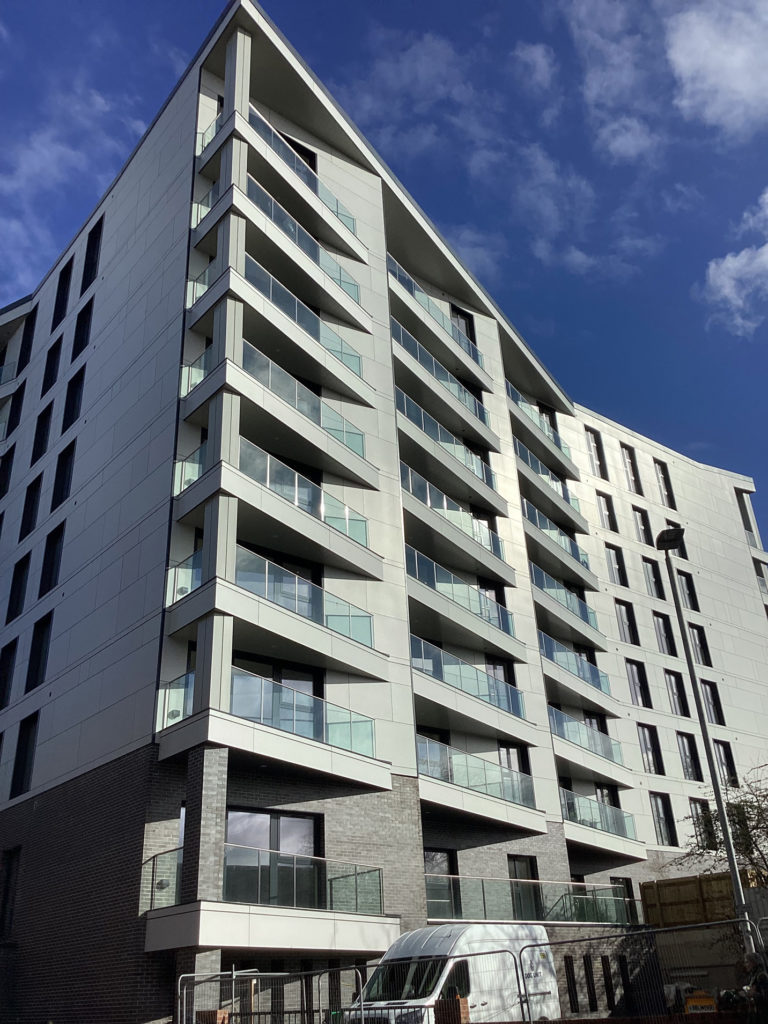When it comes to high-rise social housing, glass balconies can be a great way to offer tenants access to their own private outdoor space — all part of the push to create the high-quality social housing of the future. Here, Andy Lake, Sales Director UK & IRE at Pyroguard, explores how glass can be used safely in balcony applications, following the amendments to Approved Document B.
According to Shelter, over three million more social homes are needed to meet with demand.1 With increasing attention placed on the need for quality social housing, it’s important that local authorities, housing associations and developers are providing a comfortable and safe space for tenants to call their home. This is further demonstrated in the UK Government’s ‘Levelling up’ campaign and whitepaper, in which it calls for a social housing sector where landlords are providing their tenants with high-quality housing that they themselves would be happy to live in.2 Part of this can include providing tenants, even those in high-rise buildings, with access to a private outdoor balcony space.
When it comes to constructing these balconies, glass can be an ideal building material, helping to offer a striking
exterior feature and bring more natural light into the individual apartments. However, in the light of the Grenfell disaster of 2017 and the subsequent amendment of Part B of the Building Regulations, a ban was placed on the use of laminated glass on high-rise residential balconies and terraces over 18 metres tall. This was due to the interlayer between the individual glass sheets.
Commonly made from PVB, this interlayer could melt in extreme heat (such as that experienced during a fire) and form flammable liquid droplets. These droplets could then fall to the balcony or terrace beneath, igniting and spreading the fire further throughout the building.
Since the ban, housing providers, developers and contractors have had to look to other materials for the construction
of these balconies, such as steel. However, now, thanks to developments in the market, glass can be successfully reestablished as a design solution and brought back into these high-rise balcony applications. Of course, there are
numerous factors to be considered first to ensure compliance with the Building Regulations and protect future tenants.

Reaction to Fire classification
By looking for safety glass that has Reaction to Fire classification A1 or A2, social housing providers and developers can be confident that the product is non-combustible and that the interlayer will not melt or combust in the unfortunate event of a fire.
In addition to fire safety, it’s essential that any glass installed is impact resistant according to BS EN 12600, given the high-rise residential living setting. Of course, the glass is first and foremost a safety product, before any architectural or aesthetic value, and therefore has to satisfy the relevant line load requirements. For example, if someone leaned on the glass, or even tripped and fell into the balcony, would the glass hold?
UV stability
Another consideration when installing glass within balconies is its UV stability. With the exposed position on the exterior of a high-rise building, materials and products in this setting will be subject to all types of weather conditions, including UV sunlight and heat.
Perhaps one of the most common issues experienced throughout the glass and glazing industry is weathering. When it
comes to safety glass, in particular, the gel interlayers in some products can react and be affected by long-term exposure to UV light, causing the glass to yellow or appear hazy. With glass often being favoured for its aesthetic value, the careful selection of a product at the specification stage can help ensure that this value is protected and
that the glass won’t deteriorate over time.
Looking at the regulations, safety glass products should be tested to the relevant industry standards for weathering: ISO 12543-4:2011. This involves accelerated testing, whereby glass samples are placed into chambers within a controlled laboratory environment and subjected to varying degrees of heat, humidity and UV light. However, these tests do not necessarily always tell you the full story. To more accurately predict how safety glass will perform in the real-world, local authorities and developers should try to partner with suppliers who subject their products to real
world weathering testing.
What’s more, some safety glass products can be manufactured with a solar control or UV-stable coating within the
glazing system, helping to filter the sun’s UV light from the glass. Pyroguard Balustrade is Pyroguard’s new safety glass solution for balustrade and balcony applications, making it one of the only glass manufacturers to offer such
a product — patent pending. Calling upon its 30 years’ experience, Pyroguard was able to utilise the intumescent gel
interlayer present in its portfolio of fire safety glass products and apply it to Pyroguard Balustrade, making it inherently non-combustible and suitable for high-rise balcony applications.
1. https://england.shelter.org.uk/support_us/campaigns/a_vision_for_ social_housing
2. https://www.gov.uk/government/collections/socialhousing-quality
Header image shows Pyroguard Balustrade, Pyroguard’s new safety glass solution for balustrade and balcony applications.









